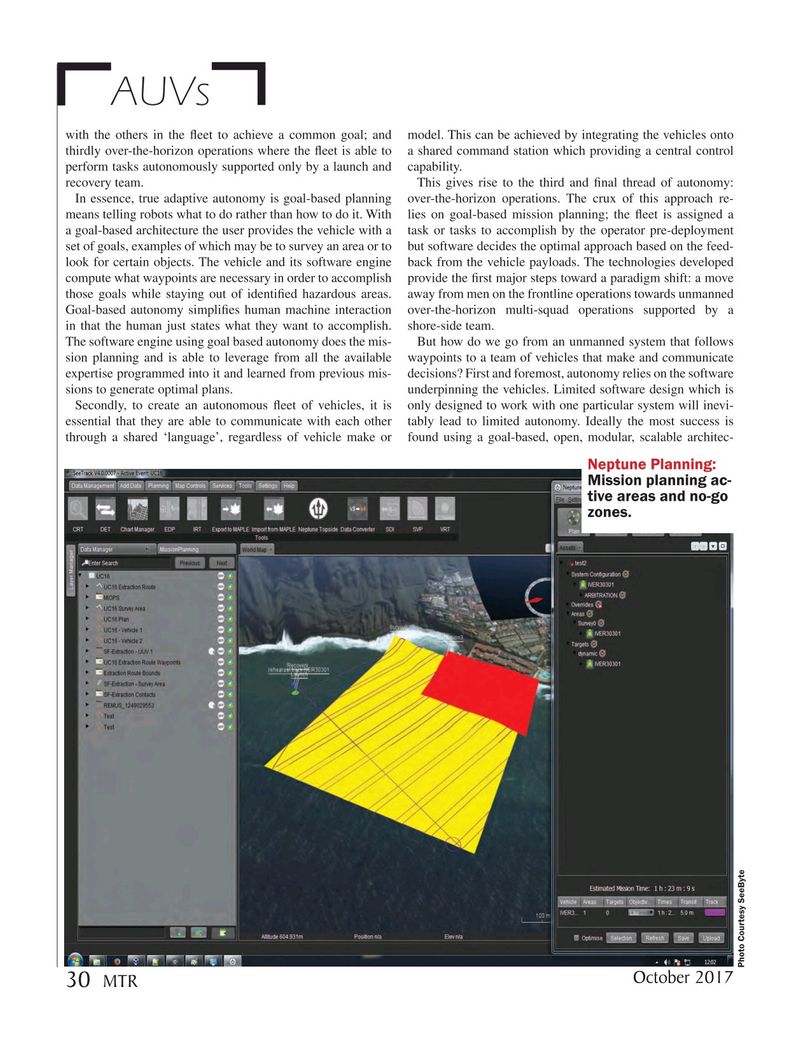
Page 30: of Marine Technology Magazine (October 2017)
AUV Operations
Read this page in Pdf, Flash or Html5 edition of October 2017 Marine Technology Magazine
AUVs with the others in the ? eet to achieve a common goal; and model. This can be achieved by integrating the vehicles onto thirdly over-the-horizon operations where the ? eet is able to a shared command station which providing a central control perform tasks autonomously supported only by a launch and capability.
recovery team. This gives rise to the third and ? nal thread of autonomy:
In essence, true adaptive autonomy is goal-based planning over-the-horizon operations. The crux of this approach re- means telling robots what to do rather than how to do it. With lies on goal-based mission planning; the ? eet is assigned a a goal-based architecture the user provides the vehicle with a task or tasks to accomplish by the operator pre-deployment set of goals, examples of which may be to survey an area or to but software decides the optimal approach based on the feed- look for certain objects. The vehicle and its software engine back from the vehicle payloads. The technologies developed compute what waypoints are necessary in order to accomplish provide the ? rst major steps toward a paradigm shift: a move those goals while staying out of identi? ed hazardous areas. away from men on the frontline operations towards unmanned
Goal-based autonomy simpli? es human machine interaction over-the-horizon multi-squad operations supported by a in that the human just states what they want to accomplish. shore-side team.
The software engine using goal based autonomy does the mis- But how do we go from an unmanned system that follows sion planning and is able to leverage from all the available waypoints to a team of vehicles that make and communicate expertise programmed into it and learned from previous mis- decisions? First and foremost, autonomy relies on the software sions to generate optimal plans. underpinning the vehicles. Limited software design which is
Secondly, to create an autonomous ? eet of vehicles, it is only designed to work with one particular system will inevi- essential that they are able to communicate with each other tably lead to limited autonomy. Ideally the most success is through a shared ‘language’, regardless of vehicle make or found using a goal-based, open, modular, scalable architec-
Neptune Planning:
Mission planning ac- tive areas and no-go zones.
Photo Courtesy SeeByte
October 2017 30 MTR
MTR #8 (18-33).indd 30 MTR #8 (18-33).indd 30 9/28/2017 2:24:33 PM9/28/2017 2:24:33 PM

 29
29

 31
31
